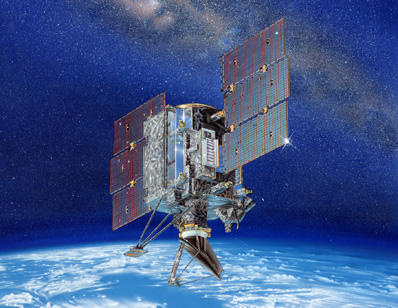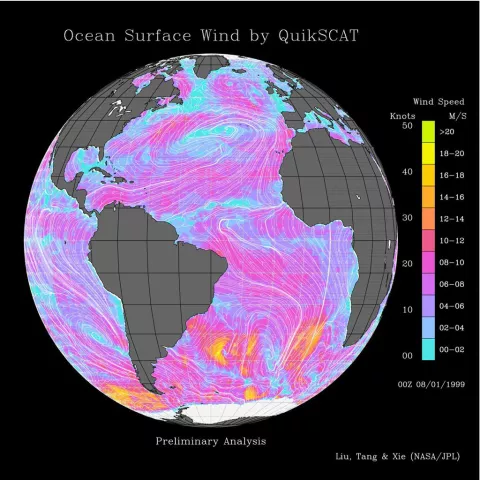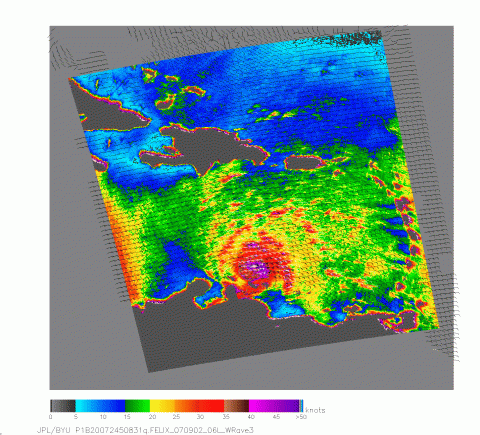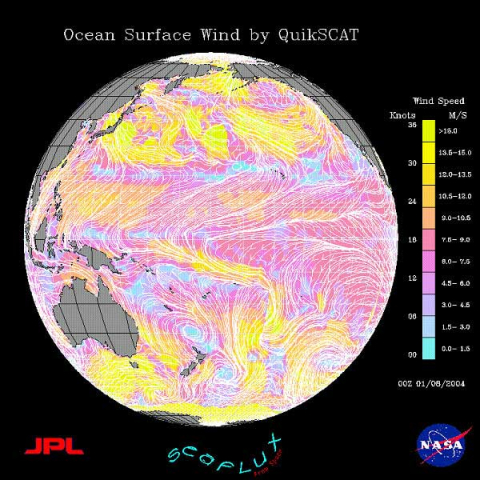Satellite family: NASA-JPL Missions
In the late 1970s, JPL engineers and scientists realized that the sensors they were developing for interplanetary missions could be turned upon Earth itself to better understand our home planet. This has led to a series of highly successful Earth-monitoring missions that have evolved into a major segment of the Laboratory’s activities, now sponsored by NASA’s Science MissionDirectorate.
In 1978, JPL built an experimental satellite called Seasat to test a variety of oceanographic sensors including imaging radar, altimeters, radiometers and scatterometers. Many of the later Earth-monitoring instruments developed at JPL owe their legacy to the Seasat mission.
QuikScat was launched in 1999 and was carrying a scatterometer called SeaWinds that collected data until 2010.
Sensor characteristics
| Sensor name | SeaWinds |
|---|---|
| Sensor short description | |
| Sensor type | Scatterometer |
| Resolution class | Very Low (> 1 km) |
| Swath width (at nadir) | 1800 km |



